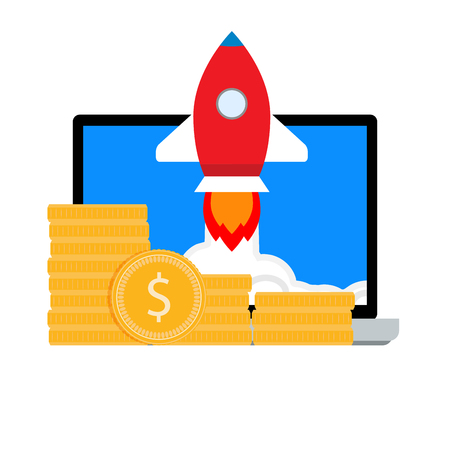Understanding Transferable Skills
When thinking about changing careers, one of the most important things you can do is identify your transferable skills. These are abilities and strengths youve developed in one job, role, or life experience that can be valuable in a completely different setting. Instead of starting from scratch, you bring these skills with you as you move into a new field.
What Are Transferable Skills?
Transferable skills are the talents and abilities that arent tied to a specific job or industry. They are flexible, portable, and can be used across many different roles. For example, if you’ve been leading a team as a retail manager, your leadership and communication skills are just as useful in an office environment or nonprofit organization.
Common Examples of Transferable Skills
| Skill | Description | Example Use |
|---|---|---|
| Communication | Clearly sharing ideas and information with others | Emailing clients, presenting at meetings, writing reports |
| Problem-Solving | Finding solutions to challenges or obstacles | Troubleshooting customer issues, streamlining processes |
| Leadership | Motivating and guiding others toward goals | Managing teams, training new hires, leading projects |
| Time Management | Organizing tasks to meet deadlines effectively | Juggling multiple projects, prioritizing daily work |
| Adaptability | Adjusting to new situations and changes quickly | Learning new technologies, handling company restructuring |
| Collaboration | Working well with others to achieve shared goals | Participating in group projects, cross-team initiatives |
Why Do Transferable Skills Matter Today?
The job market is more dynamic than ever before. Many people switch careers several times during their working lives. Employers look for candidates who can bring a broad range of skills to the table—not just technical know-how. Being able to show that you have strong transferable skills makes you more competitive and helps bridge gaps when moving into a new field.
The Game-Changer in Career Switching
If you’re worried about not having direct experience in your target industry, focus on your transferable skills. Highlighting these strengths can help employers see how your past experiences prepare you for future success. For example, if youve worked in customer service but want to move into project management, your problem-solving and communication abilities become key selling points.
Identifying Your Core Strengths
Why Knowing Your Strengths Matters
When planning a career change, one of the most important steps is understanding what you’re truly good at. Recognizing your core strengths helps you see which abilities you can bring to a new role or industry, making your transition smoother and more successful.
Effective Strategies for Assessing Your Abilities
Self-Reflection Techniques
Start by taking time to reflect on your past experiences. Think about situations where you felt confident, received praise, or achieved great results. Ask yourself questions like:
- What tasks come easily to me?
- Which projects have I enjoyed the most?
- When have others relied on me for help?
Leverage Assessment Tools
There are many tools available that can help you identify your strengths. Some popular options include:
| Assessment Tool | Description | Where to Find It |
|---|---|---|
| CliftonStrengths (StrengthsFinder) | Offers insights into your natural talents and how to use them at work. | Gallup website |
| Myers-Briggs Type Indicator (MBTI) | Helps identify personality preferences that influence work style and strengths. | MBTI Online |
| Skill inventories | Simple checklists where you rate your skills in various areas. | Available through career centers or online resources |
Gathering Feedback from Others
Your own perspective is valuable, but getting input from others gives you a more complete picture. Reach out to former managers, coworkers, mentors, or even friends and family. Ask questions like:
- What do you think are my strongest skills?
- In what situations have you seen me excel?
- Are there areas where I make things easier for the team?
This feedback can reveal strengths you might not notice yourself and show how your abilities impact those around you.
Pinpointing Transferable Strengths Across Industries
The next step is to match your core strengths with skills that are valued in different industries. Many strengths—like communication, problem-solving, leadership, and adaptability—are useful in almost any field.
| Strength | Description | Transferable To… |
|---|---|---|
| Communication | Able to clearly express ideas and listen well. | Sales, Marketing, Customer Service, Management |
| Problem-Solving | Enjoy finding solutions to tough challenges. | IT, Healthcare, Operations, Consulting |
| Leadership | Able to motivate and guide others toward goals. | Project Management, Education, Nonprofits, Corporate Roles |
| Adaptability | Easily adjusts to new situations and changes. | Startups, Tech, Hospitality, Retail |
| Analytical Thinking | Loves working with data and making sense of complex issues. | Finance, Data Analysis, Research, Engineering |
Tip:
If youre unsure whether a strength will transfer to a new industry, check job descriptions for roles that interest you. See which skills keep coming up—that’s often a sign they’re in demand everywhere.

3. Bridging the Gap: Mapping Your Skills to New Roles
Understanding the Importance of Skill Mapping
When you’re planning a career change, one of the biggest challenges is figuring out how your current skills can apply to new roles. The good news is that many skills are transferable—even if your past experience seems unrelated at first glance. By mapping your strengths to the requirements of your target job, you can show employers that you’re ready for a smooth transition.
Step-by-Step: How to Map Your Skills
1. Identify Your Transferable Skills
Start by listing all the skills you’ve developed in your current and previous roles. These can include technical abilities, soft skills like communication, or leadership qualities. Don’t overlook everyday strengths such as problem-solving or adaptability.
2. Analyze Job Descriptions
Look up several job postings for the roles you’re interested in. Highlight the key requirements, focusing on both hard and soft skills mentioned by employers.
3. Match Your Skills to Job Requirements
Create a table to compare your existing skills with those required in your target roles. This will help you spot overlaps and gaps that you may need to address through further learning or training.
| Your Current Skill | Description | Target Role Requirement | Match? |
|---|---|---|---|
| Project Management | Coordinated cross-team projects on tight deadlines | Organizational and time management skills | Yes |
| Customer Service | Handled client inquiries and resolved issues efficiently | Client-facing communication skills | Yes |
| Data Analysis (Basic) | Used Excel for reporting sales data | Advanced data analysis using specialized tools | No—needs improvement |
| Team Leadership | Supervised a small team during seasonal campaigns | Ability to lead and motivate teams | Yes |
4. Fill in the Gaps
If you notice areas where your experience doesn’t fully match what’s needed, don’t worry! Consider taking online courses, volunteering for relevant projects, or seeking mentorship to build those missing skills.
Real-World Example: From Retail Manager to Human Resources Specialist
Samantha worked as a retail manager for five years and wanted to move into HR. She mapped her skills and found she already had experience in conflict resolution, training new employees, and scheduling—skills highly valued in HR roles. By emphasizing these strengths and taking an online HR certification course, she successfully made the switch.
Pro Tip:
Always tailor your resume and LinkedIn profile by highlighting the transferable skills most relevant to each role you apply for. Use examples from your past work that clearly demonstrate these abilities in action.
This practical approach not only boosts your confidence but also makes it easier for potential employers to see the value you bring—no matter where you started out.
4. Showcasing Your Strengths to Employers
Mastering American-Style Resume Writing
When changing careers, your resume should focus on the transferable skills and strengths you can bring to a new role. In the U.S., resumes are concise (usually one page), achievement-focused, and tailored for each application. Use strong action verbs and quantify your results wherever possible. Heres how you can present your transferable skills on your resume:
| Transferable Skill | How to Highlight on Resume | Example Bullet Point |
|---|---|---|
| Communication | Mention presentations, teamwork, or customer interactions | Delivered weekly presentations to cross-functional teams, improving project understanding by 30% |
| Project Management | Showcase leadership of projects or teams | Led a team of 5 to complete a product launch ahead of schedule, resulting in $50K revenue boost |
| Problem-Solving | Describe how you resolved challenges or improved processes | Identified process inefficiencies, implementing solutions that reduced costs by 15% |
| Adaptability | Highlight experiences in new environments or learning new skills quickly | Adapted quickly to remote work, maintaining productivity and team engagement during transition |
Writing a Standout Cover Letter
Your cover letter is your chance to tell your story. Explain why you’re making a career change and how your existing strengths are a perfect fit for the new industry. Use friendly, confident language—show enthusiasm about the company and role.
Tips for an Effective Cover Letter:
- Address the Hiring Manager by Name: Personalize your greeting if possible.
- Open with Your Motivation: Share why you’re excited about this career shift.
- Connect Past Experience: Give specific examples of how your skills apply to their needs.
- Close with Confidence: Express eagerness to contribute and learn.
Nailing the Interview: Show What Sets You Apart
The interview is where you bring your transferable skills to life. Practice using the STAR method (Situation, Task, Action, Result) when answering behavioral questions. This helps you give clear, memorable examples that show exactly how you’ve used these skills before.
Common Interview Questions & How to Answer Using Transferable Skills:
| Question Type | What They Want to Know | Your Approach |
|---|---|---|
| “Tell me about yourself.” | Your relevant experience and motivation for change. | Smoothly connect past roles with current goals, focusing on relevant strengths. |
| “Describe a challenge you faced.” | Your problem-solving ability. | Select a challenge from any job that highlights adaptability or creativity. |
| “Why should we hire you?” | Your unique value proposition. | Tie together your transferable skills and enthusiasm for the new field. |
Pro Tip:
If youre unsure whether an example fits perfectly with the new job, focus on the underlying skill rather than the industry-specific details. U.S. employers value candidates who can clearly articulate their strengths and demonstrate flexibility in learning new things.
5. Developing Your Skills for Continued Growth
Upskilling: How to Build New Capabilities
As you prepare to move into a new career, strengthening your transferable skills is key. Upskilling means learning new abilities or improving existing ones to stay competitive. Here are some popular and accessible resources for upskilling in the U.S.:
| Resource Type | Popular Platforms | How It Helps |
|---|---|---|
| Online Courses | Coursera, LinkedIn Learning, Udemy | Learn at your own pace on topics like project management, digital marketing, coding, and more. |
| Community Colleges | Local community college programs | Affordable classes or certifications in business, healthcare, tech, and trades. |
| Industry Certifications | PMP (Project Management), SHRM (HR), CompTIA (IT) | Gain credentials recognized by employers in your target field. |
| Workshops & Webinars | Eventbrite, Meetup, Chamber of Commerce events | Short-term learning experiences with networking opportunities. |
Networking: Building Connections in Your New Field
Networking is essential when changing careers in the U.S. It helps you learn about job openings, understand industry trends, and find mentors. Try these strategies:
- Attend Industry Events: Join local meetups, conferences, or workshops to meet professionals face-to-face.
- Use LinkedIn: Connect with people in your desired field, join relevant groups, and share your learning journey.
- Informational Interviews: Ask for short meetings with industry insiders to learn about their roles and get advice.
- Alumni Networks: Reach out to former classmates from college or training programs who work in your target industry.
Staying Adaptable: Embrace Change as You Grow
A successful career change requires flexibility and a willingness to adapt. Here are some tips for staying adaptable during your transition:
- Cultivate a Growth Mindset: View challenges as opportunities to learn rather than obstacles.
- Keep Up With Trends: Subscribe to newsletters or podcasts related to your new industry so you’re always informed.
- Seek Feedback: Regularly ask for input from mentors or peers to help you improve.
- Create a Learning Plan: Set specific goals for what you want to learn each month and track your progress.
Your Action Plan for Continued Growth
The American job market values continuous learning and adaptability. By investing time in upskilling, building strong networks, and staying open to new ideas, you’ll be better equipped for a smooth and successful career transition.


